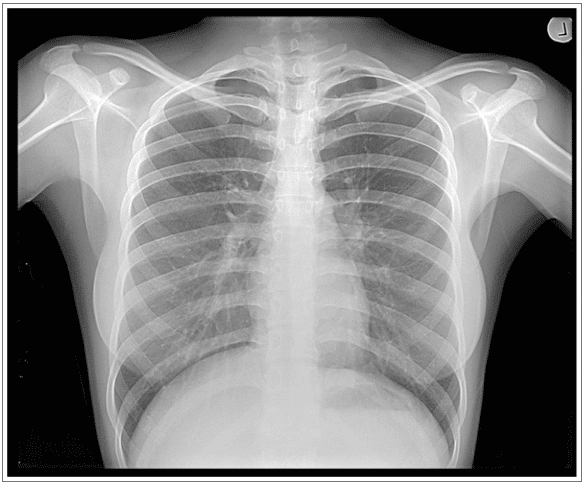The importance of lead-lined doors for healthcare
Many environments place particular demands on their doors, with requirements including fire resistance and soundproofing. Some of these – notably buildings used by the public such as schools, hospitals and government offices – are also regulated to ensure that minimum standards are met.
When we consider doors for healthcare facilities such as hospitals, dental surgeries and veterinary clinics, it becomes clear why they have even more demanding requirements – due to the nature of the activities that take place within them. Hygiene, together with the absolute necessity to prevent the spread of germs and to control infection, are very high on the list. Similarly, as some departments will be using X rays, protecting public from the radiation is very important. Durability is vital too – healthcare facilities can be rough places, with trolleys pushed through doors sometimes at speed (in an emergency for example).
These all add up to a particularly high specification for doors for healthcare. Now let’s probe into some of the key things that you’ll need to consider before we look at what the specification actually is.
1. Fire resistant.
It probably goes without saying that the doors in healthcare facilities need to provide substantial resistance to the spread of fire and smoke while simultaneously permitting rapid evacuation and access for the emergency services if necessary
2. Soundproofed.
In certain rooms, such as Operating Theatres, noisy distractions from the outside are obviously extremely unwelcome. There will be other rooms, such as maternity wards, where it would be kind to other patients to keep the sound of crying babies at night to a minimum!
3. Hygienic
The doors will need to be easy to clean and to keep clean.
4. Safehinge
Specialist hinging mechanisms to avoid accidents caused by trapping fingers in closing doors
5. Durable
Door face protection, hygienic lacquers etc. can help to extend the lifetime of the doors in tough environments.
6. Visible
White edge details on the leading edges of doors can assist the visually impaired, while bright colours can add some sparkle to a children’s ward!
7. X-ray doors
X-rays are widely used in hospitals, vets and dental surgeries, and also in some research and academic establishments. Protecting people from their potential harmful side-effects by the installation of lead-lined doors is most important
8. How do lead lined doors protect people from X rays?
Let’s remind ourselves what X rays are – a form of electromagnetic radiation, with wavelengths between 0.01 and 10 nanometres. Thus their wavelengths are longer than those of gamma rays but shorter than those of UV rays.
Here’s a helpful image, courtesy of NASA:
As they pass through the body, the energy from the X-rays is absorbed at different rates by different parts of the body. A detector on the other side of the body picks up the X-rays after they’ve passed through and turns them into an image.
Dense parts of your body that X-rays find it more difficult to pass through, such as bone, show up as clear white areas on the image. Softer parts that X-rays can pass through more easily, such as your heart and lungs, show up as darker areas. Thus we get images like this, which we’ve all seen:
As with most forms of radiation, there is a health risk associated with exposure to it. However, the part of your body being examined will only be exposed to a low level of radiation for a fraction of a second.
For example, an X-ray of your chest, limbs or teeth is equivalent to a few days’ worth of naturally occurring background radiation, and has less than a 1 in 1,000,000 chance of causing cancer. If you would like further information, please check out this link on safe dosage levels.
So how do the leadlined or x-ray doors protect people? The first thing to say is that the X rays can, and in fact do, pass through the lead.
What lead does is to attenuate the X rays. That is, for a given number of X ray photos incident on a block of lead, a fraction of them will be absorbed and the remainder will continue on and escape out from the other side. The more material the X rays have to travel through (i.e. the thicker the piece of lead), the greater the fraction of absorbed X rays, up to a point where the lead is sufficiently thick and virtually no photons can escape.
Lead is used within x-ray proof doors because:
- It has a large atomic number (Z=82). This means that is has a lot of protons and electrons per atom. X ray interactions with electrons are the primary method by which they are absorbed.
- It has a large mass density (ρ=11.34 g/cm^3). This means that the electron density (number of electrons per unit volume) is also large
The consequence of these two facts (large atomic number and density) is that it takes relatively less lead to attenuate X rays than most other materials. While there are materials with larger atomic numbers and densities than lead, it remains a popular material for X ray door shielding as it is abundant, affordable, and easily shaped into blocks and sheets. So now you know!
Expert advice on doors for healthcare
We’ve seen that there’s an awful lot to think about when you’re considering doors for healthcare, and as usual it’s vital that you talk to the experts.
If you would like further information on our company please visit our home page or go directly to our contact page when we will respond as quickly as possible.
As always we’ll be delighted to help and advise you.










